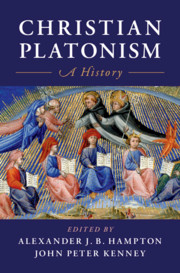Book contents
- Christian Platonism
- Christian Platonism
- Copyright page
- Dedication
- Contents
- Figures
- Contributors
- Acknowledgements
- I Concepts
- 1.1 The Perennial Value of Platonism
- 1.2 The Ideas as Thoughts of God
- 1.3 The One and the Trinity
- 1.4 Creation, Begetting, Desire, and Re-Creation
- 1.5 The Concept of Theology
- 1.6 Participation: Aquinas and His Neoplatonic Sources
- II History
- III Engagements
- Index
- References
1.5 - The Concept of Theology
from I - Concepts
Published online by Cambridge University Press: 20 January 2021
- Christian Platonism
- Christian Platonism
- Copyright page
- Dedication
- Contents
- Figures
- Contributors
- Acknowledgements
- I Concepts
- 1.1 The Perennial Value of Platonism
- 1.2 The Ideas as Thoughts of God
- 1.3 The One and the Trinity
- 1.4 Creation, Begetting, Desire, and Re-Creation
- 1.5 The Concept of Theology
- 1.6 Participation: Aquinas and His Neoplatonic Sources
- II History
- III Engagements
- Index
- References
Summary
One of the most remarkable contributions of the Middle Ages to Western thought is the invention of theology as a rational science of faith. This chapter traces the origin of the concept of theologia. By examining the works of Dionysius the Areopagite, John Scotus Eriugena, and Boethius, it is possible to arrive at a picture of how theology came to be used to designate a Christian discipline, and the field for the rational interpretation of faith.
- Type
- Chapter
- Information
- Christian PlatonismA History, pp. 101 - 121Publisher: Cambridge University PressPrint publication year: 2020



